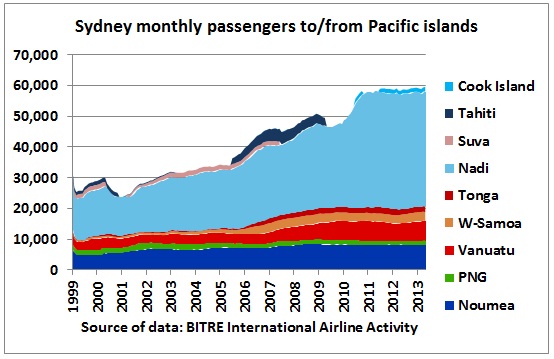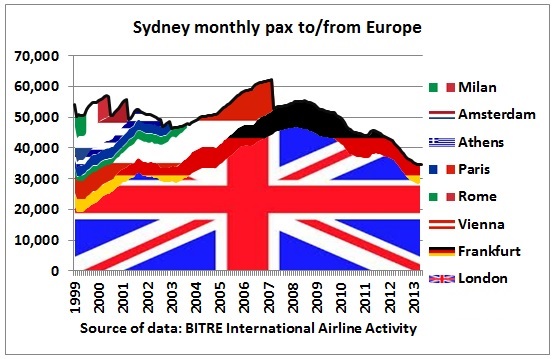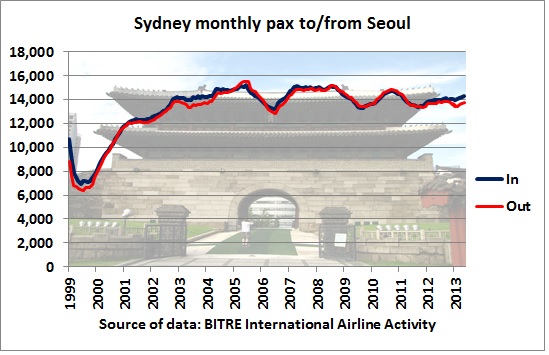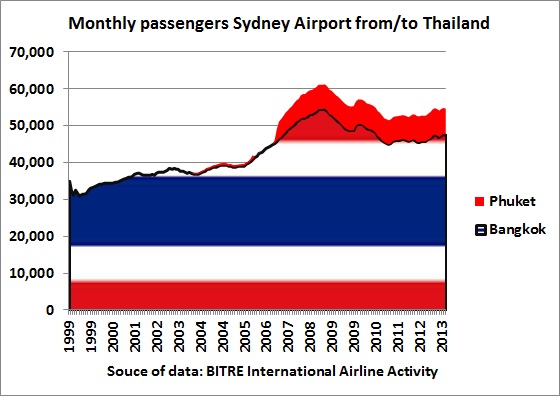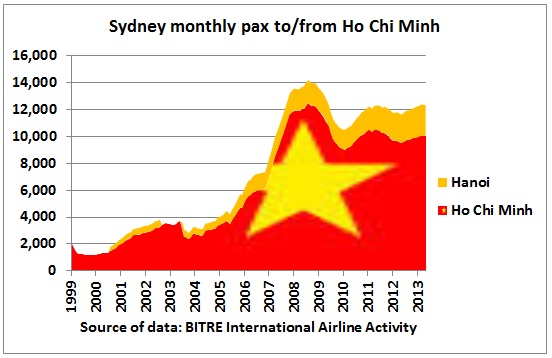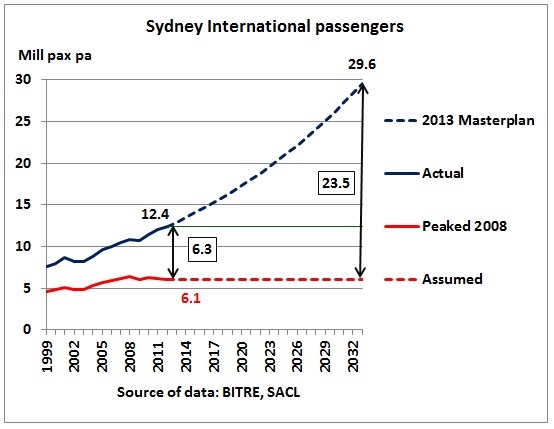Bizarre election stunt by an Australian politician to lobby for a 2nd Sydney airport, far from his own electorate in Queensland. 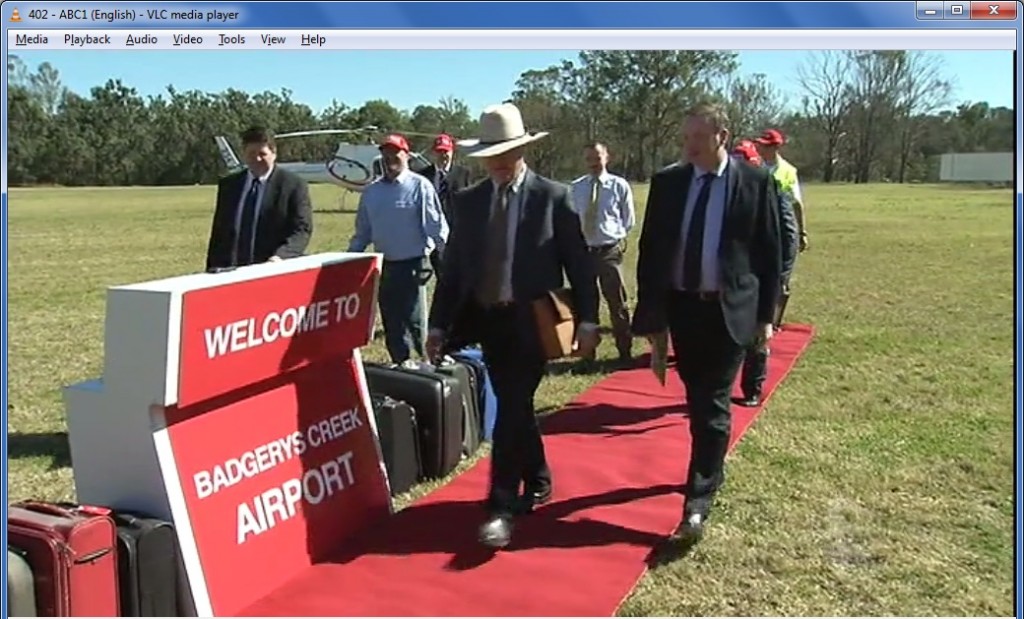
Bob Katter arriving by helicopter in Badgerys Creek, on 16/8/2013, welcomed by Sydney Business Chamber Director David Borger. But does Sydney really need a 2nd airport? This is part 2 in a series of posts on Sydney airport where we try to find the subtle changes as a result of peak oil which started in 2005. 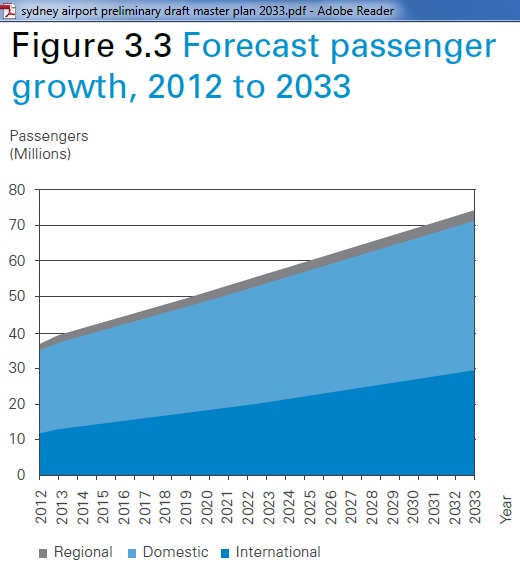
.http://www.sydneyairport.com.au/corporate/master-plan.aspx
The 2013 Sydney Airport Masterplan forecasts an annual, exponential growth of 4.2% for international passengers from 12.4 m in 2012 to 29.6 m by 2033. This is lower than the 4.8% forecast of the 2009 Masterplan, bringing about a reduction of 3.5 million passengers in 20 years (equivalent to Canberra’s total current air traffic volume) 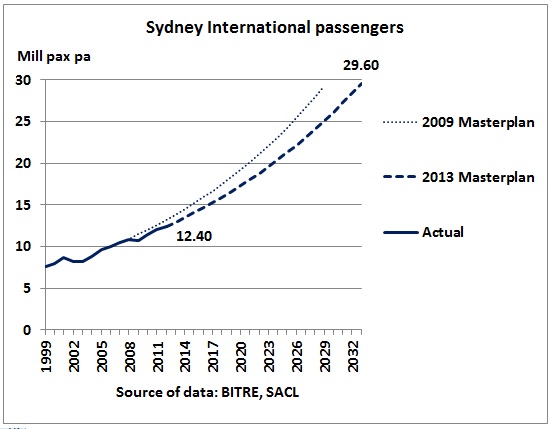 Let’s have a look at the composition of air traffic’s past growth:
Let’s have a look at the composition of air traffic’s past growth: 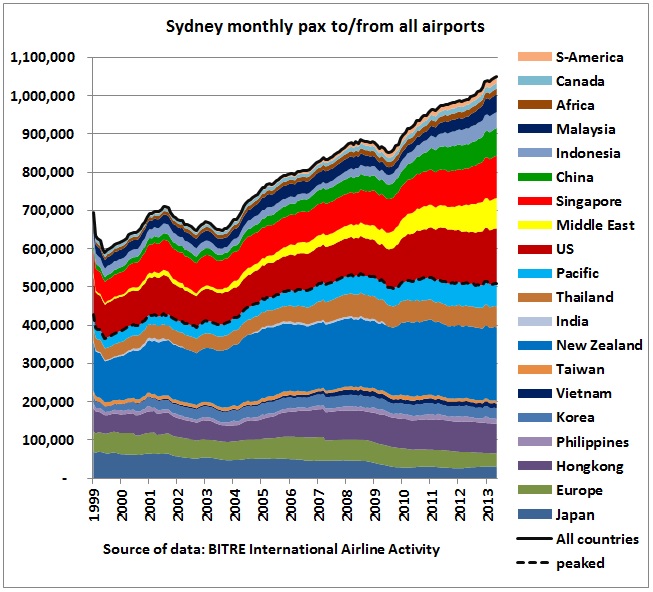 12 months moving average up to May 2013. We see that almost half of all direct flights have peaked in 2008, with a 5% drop over 5 years. All data are from here: http://www.bitre.gov.au/publications/ongoing/international_airline_activity-time_series.aspx
12 months moving average up to May 2013. We see that almost half of all direct flights have peaked in 2008, with a 5% drop over 5 years. All data are from here: http://www.bitre.gov.au/publications/ongoing/international_airline_activity-time_series.aspx
Stagnating or declining group
We have a look at what happened, country by country, starting with New Zealand, the biggest contributor to international air traffic
 Since 2011 air traffic to/from New Zealand dropped slightly.
Since 2011 air traffic to/from New Zealand dropped slightly.
Long term tourism growth ended in 2011
Direct flights from most European cities stopped even before the Global Financial Crisis (GFC). Flights from the 2 remaining airports, London and Frankfurt, peaked in 2008. 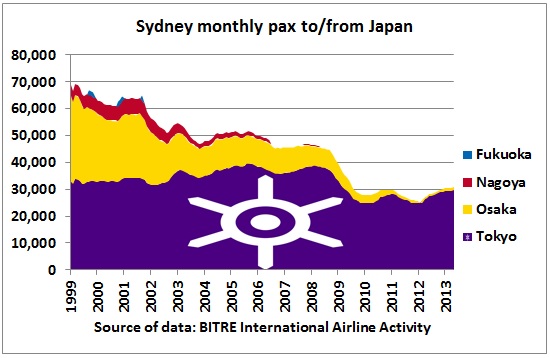 Direct flights from Japan are in long-term decline. They dropped after the GFC and never really recovered.
Direct flights from Japan are in long-term decline. They dropped after the GFC and never really recovered. 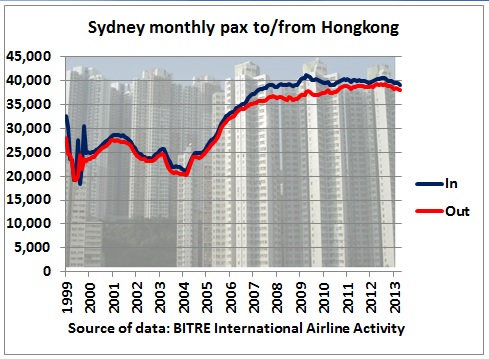
Rapid growth after 2004 stalled already in 2007
Korea on bumpy plateau for a whole decade now
Declining trend with short term recovery in 2010
Growth went into reverse since the GFC
Peaked in the GFC year 2008
Let us assume that around half of the international air traffic continues at current levels of 6.1 million passengers pa. Then the other half must grow from 6.3 to 23.5 million pa in order to achieve the forecast. That would be a huge 3.7 fold increase in 20 years or an additional 0.86 million passengers each year. However, in the last 12 years, the average growth rate in the growing group was only 0.25 million pa. From this simple past performance and trend estimate it is unlikely that there will be 29.6 million international passengers in 2033.
Conclusion We see the traces of the Global Financial Crisis – which was triggered by high oil prices – in many graphs. Under an optimistic scenario, half of all flights may continue at current levels. The other half would have to more than triple average past growth rates to achieve the forecast of the Sydney Airport Master Plan. That is highly unlikely given the combination of high oil prices, accumulating debt, continued money printing and a bleak outlook in the Middle East To be continued.
The next post will look at growing air traffic
Previous post
7/10/2012 Peak oil lite: Sydney Airport passenger traffic 15% below 2009 forecast (part 1)
http://crudeoilpeak.info/peak-oil-lite-sydney-airport-passenger-traffic-15-pct-below-2009-forecast-part-1
